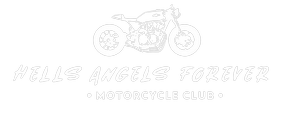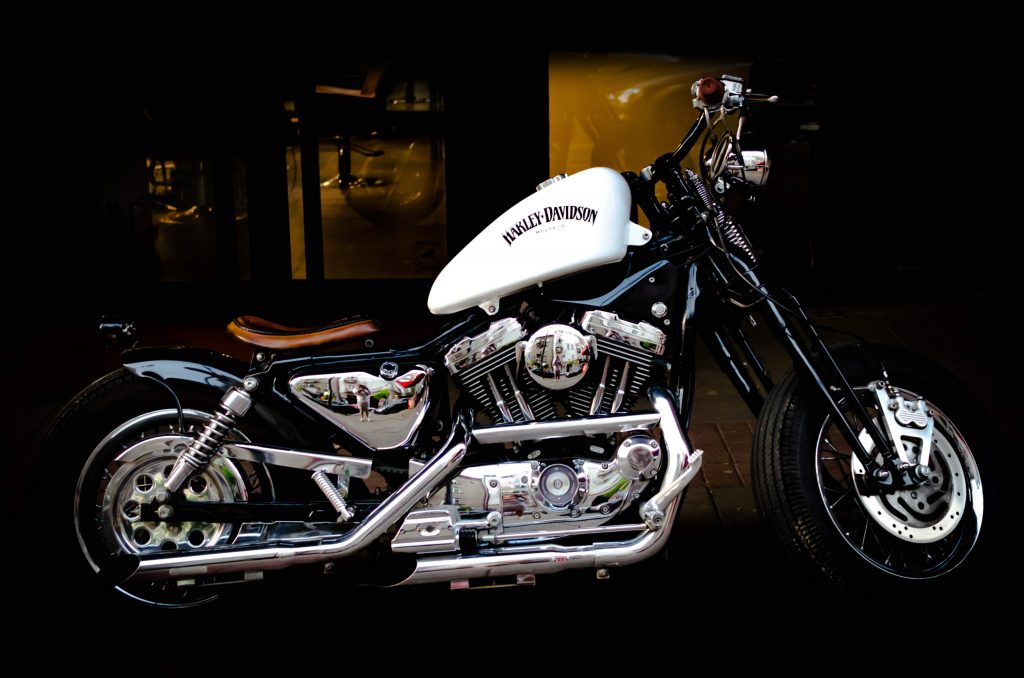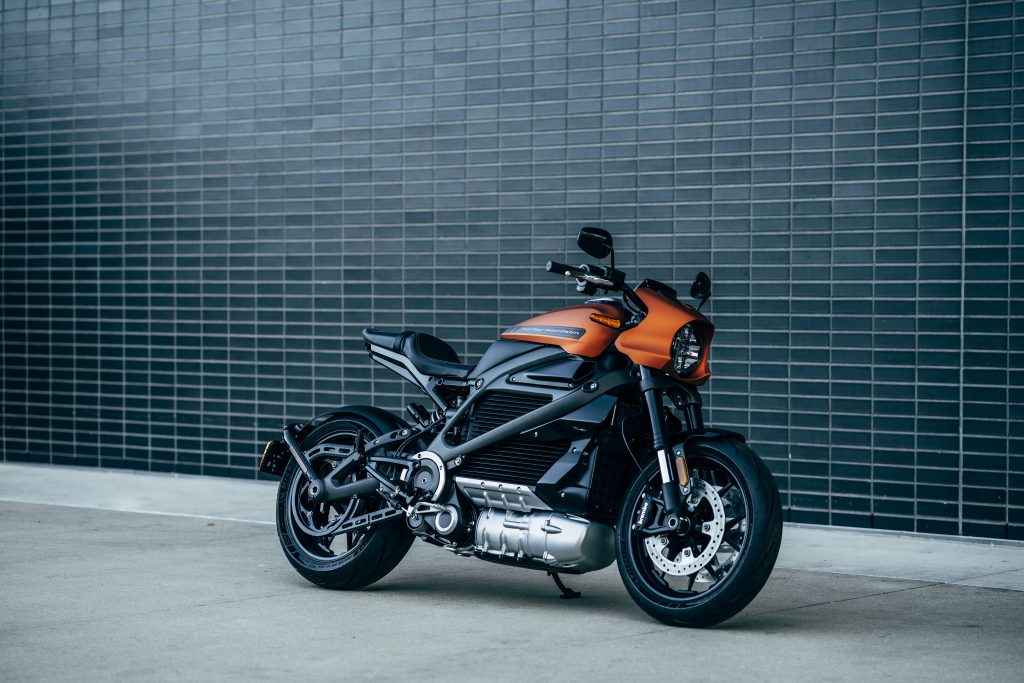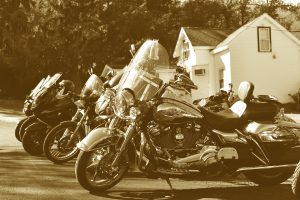If you’re looking for a vehicle that’s both fast and beautiful, these are the two tires you’ll want to put on.
Iconic motorcycles can be found all over the world. Their mechanical interpretations of form meeting function are equal parts simple and complicated, and they’ve got attitude to spare. Motorcycles are more than just a mode of transportation; they suffocate attention with their gleaming chrome, single-sided swingarm engineering, and sheer speed. While out for a spin, you’ll notice children pointing and smiling mid-whimper, dogs chasing one other, angsty teens fighting the urge to purse their lips, and grizzled biker types in leather nodding in understanding.
In spite of this, some motorcycles have a greater impact on the public. There are infinite combinations of weapon-grade speed, sex, beauty, design, and freedom between two tires, both fresh examples on the market now and ones that have been relegated to the annals of automotive history. However, these are the motorcycles that Gear Patrol has selected as the most memorable and iconic of all time — the most memorable and iconic motorcycles ever created.
The following is a complete list:
BMW R1200GS Touring
An example of the total being larger than the sum of its parts, the XR750 is essentially a parts-bin special built to comply with evolving AMA dirt-track rules. In 1970, Harley-racing Davidson’s division was forced to reevaluate its strategy after years of dominating the sport.
That’s what they achieved in less than a year, and in doing so, they developed the most successful AMA race bike ever. Since 200 race-ready road-goers had to be made available to the general public, a legend was established. The XR750’s attraction was heightened when a man with the moniker “Evel” chose to ride it.
Honda CB750 Motorcycle
The transverse-mounted, inline-four cylinder engine was introduced by Honda in 1969. The CB750 was the game-changing outcome of Soichiro Honda’s obsession with cracking the American market, and is regarded as one of the first true “superbikes.”
Because of its race-proven inline-four configuration, the CB750 was capable of easily and comfortably topping 120 mph. The introduction of front-mounted disc brakes transformed the motorcycle industry. The addition of an electronic starter, a kill switch, the usage of an overhead camshaft, and the ease of maintenance was the cherry on top.
The CB77 Honda
CB77 (Superhawk) was Honda’s first foray into sportbikes. The CB77’s 305cc parallel twin engine could easily rev all the way up to nine thousand rpm, sending riders over the “ton” with little effort (a.k.a. 100 mph). However, Honda’s image in the West was built and solidified on its reputation for dependability. To save weight, the CB77’s frame was made of tubular steel rather than pressed, with the motor serving as a stress member, resulting in a highly flickable motorcycle.
Robert Pirsig, author of Zen and the Art of Motorcycle Maintenance, was a fan of the Honda Superhawk on his intellectual trip documented in the book.
Super Cub Honda
This is the best-selling motorcycle in the world, according to Honda. Production has lasted for more than 50 years, and a sturdy single-cylinder engine and a low total cost of ownership both contribute to this conclusion. The Super Cub has been compared to the Ford Model T and the Volkswagen Beetle for its impact on motorized transportation since it is ubiquitous throughout Asia, Africa, and South America and is available in several incarnations.
In the near future, the Cub won’t be disappearing at all. Honda celebrated its 50th anniversary in 2008 by producing its 60 millionth motorcycle, and sales haven’t slowed since; in 2017, the 100 millionth Super Cub was produced.
A triple-cylinder Kawasaki motorcycle.
The amazing power-to-weight ratio of the Kawasaki Triples produced during the disco period made them famous. Within a two-block radius of the showroom floor, runners have clocked quarter-mile times as low as 13.0 seconds. If they were in a straight line and the riders were able to keep the front wheel firmly planted on the ground, the three-cylinder engine was known for wanting to run up on one. From the beginning, they suffered from poor handling and were dubbed the “Widowmaker” of the 1970s because of it.
Despite, or perhaps because of, this, Kawasaki Triples continue to be sought for and fetch high prices when available.
The Kawasaki Z1.
The Z1 was Kawasaki’s answer to Honda’s CB750, codenamed “T103” and “New York Steak” internally. Indeed, Kawasaki’s 750cc attempt was almost ready for prime time when Honda unveiled the CB in 1968 and began a power war on the superbike industry.
The 903cc Kwack was the most powerful Japanese four-pot ever made when it went on sale in 1973. The 550-pound superbike hit 130 mph with its 82-horsepower engine, earning The Motorcycle News’ prized “Machine of the Year” award for four years in a row. Additionally, the Z1 would win multiple races at the track, thanks to a close relationship with Yoshimura Tuning and a gentleman known only as Paul Smart in the saddle.
The Bonneville Triumph
Icons are immortal. Triumph motorcycles have been discontinued three times, but the Bonneville is still going strong. The Bonneville exudes coolness from every perspective, whether it’s an early Triumph Engineering effort, a Norton Villiers Triton, a Devon Bonnie, or a modern Hinckley model. A reputation acquired on the racetrack has been elevated by the likes of Marlon Brando, James Dean, and (of course) Steve McQueen. Despite the parallel-twin engine’s increased displacement from 650 to 865 cubic centimeters and the switch from carburetors to fuel injection, the bike’s iconic silhouette has remained mostly unchanged throughout the years.
Clubman BSA Gold Star
Riders who could complete a lap of Brooklands at a speed greater than 100 mph were given the Gold Star pin. It was in 1937 that Wal Handley, who had been in retirement, emerged from retirement to post the first-ever BSA Gold Star lap time at 107.5 mph.
BSA redoubled their efforts to support the new name, which was now printed on their tanks, and went on to dominate the Clubman TT until 1956. Factory test results informed buyers how much power was in the 500cc single-cylinder Gold Star before it was sold. Later variants could potentially be equipped with a first gear that could reach 60 mph without the need for shifting. In the manufacturer catalogs, this bike was labeled as a racer and not appropriate for road use because of this. Fortunately, this would only increase their popularity.
900SS Ducati
900 Superlight powered by an 864cc “square case” was created by Ducati to take a bite out of the Japanese-dominated supersport market in the 1970s. The Desmodromic L-resemblance twin’s to Paul Smart’s Imola-winning 750 SS made it an instant hit. With its new shifter (now situated on the left side of the bike) and classic spoked wheels, the 1978 Ducati stands out among its peers. After winning the Isle of Man TT, the ’78 model would retire at the top of its class.
PS1000LE Ducati
In honor of Paul Smart’s first-place finish in Imola on his 1972 Ducati 750SS, the PS1000LE is the most beautiful way to show your appreciation. The Paul Smart model was based on the Sport Classic series, but Pierre Terblanche’s design was elevated to a new level. Front bubble shield, spoked wire wheels, and green trellis frame contrast with hyper contemporary Ohlins suspension and stout Pirelli tires to create classic juxtaposition. The PS1000LE may be one of the most sought-after Ducatis ever built due to its limited production and one-year production run.
The Le Mans Moto Guzzi
The shaft-driven Moto Guzzi Le Mans, which was propelled by a low-tech lump coupled to a car-type transmission, frequently felt like two distinct beasts. It was slow and twitchy at low revs, but when riders stepped on the gas, the bike’s frame twisted, making cornering dangerous. On the correct route, though, with your knees pulled into the carbs at full bore, this Latin lady transforms into something magnificent.. As opposed to the typical cafe racer’s chrome, the Guzzi’s plumbing was matte black, which went well with its sculpted tank and low-lying windscreen.
“Norton Commando”
Racing fans began referring to the Norton Commando race bikes as “unapproachable Norton” because of their overwhelming success. Interestingly, the Nortons’ toughness on the track was masked by their friendliness off it.
A former Rolls-Royce engineer was hired by Norton to help build a package for the larger 750cc Norton parallel-twin, taking what Triumph had started. All but eradicated vibrations were due to the groundbreaking use of rubber attachment for mechanical components. Riders are now able to push themselves harder and for longer periods of time. Early Nortons are known for spilling oil, but we’re quite sure that the riders were just squeezing every last drop out of the engine.
The Norton Manx was a motorcycle made by Norton in 1950.
The Isle of Man TT and Norton motorcycles are a match made in heaven. Norton’s sole purpose in life has been to compete in every Tourist Trophy race since its establishment in 1907. During the 1950s, the team was working with a 25-year-old engine design that was outdated and underpowered. As a result of its pivoting rear fork suspension and fully welded duplex frame, the “Featherbed” frame was lighter and more maneuverable than any previous frame of its kind.
With an additional 8 hp (for a total of 36 hp) from some modest changes, Norton was no longer just competing; it was dominating. They finished in the top six in five of the six races.
The 1923 BMW R32
BMW-R32-Gear-Patrol
German aircraft manufacture was shut down after World War II, leaving BMW in quest of a new mission. Motorcycles were built by Bayerische Motoren Werke five years before they started making Ultimate Driving Machines. The R32, created by BMW Motorrad iconoclast Max Friz in 1923, would go on to define the brand.
The horizontally opposed heads of the boxer-twin engine were perfectly positioned in the airstream to increase cooling. A drive shaft and this solution virtually removed the normal problems involved with putting power down on pavement for motorcycles. Until BMW’s first chain drive effort in 1993, this drivetrain arrangement was entirely employed by BMW and is still prevalent today on all of BMW’s boxer bikes.
Vehicle Identification Number (VIN)
When it was released in 1966, the R60 was BMW’s all-terrain, all-action touring motorcycle. The combination of a flat-twin engine and Earle’s fork design made it an extremely versatile bike, capable both on and off the road. Danny Liska rode his R60 from the Arctic Circle to the tip of South America on a 95,000-mile journey because it was so fearsome. To make room for Boorman and McGregor, he set off from Northern Europe to South Africa, without the use of a support crew, a satellite phone, GPS, or any other outside assistance.
SS100 Brough Superior
Brough Superior SS100s were dubbed the “Rolls-Royce of motorcycles” because of their meticulous attention to detail. It may not seem like much now, but the SS100 was a marvel of engineering and craftsmanship in 1924, and each one was guaranteed to achieve 100 mph. When George Brough rode the Brough Superior SS100 in 1928, it reached 130 mph in the standing kilometer. T.E. Lawrence, better known as Lawrence of Arabia, owned three Brough Superiors throughout his lifetime and tragically died after sustaining head injuries while swerving to avoid two teenage cyclists. T.E. Lawrence had three Brough Superiors during his lifetime. In the end, Lawrence’s tragedy will force motorcyclists to wear crash helmets because of his tragic demise.
Forty-Nine
FN started out as an armaments factory before deciding to branch out into motorcycles. When compared to their competitors, FN would be the first to introduce the world to a motorcycle powered by an inline four cylinder engine. When it was introduced in 1905, FN’s 362cc inline-four was smooth and nearly vibrationless at high speeds, compared to single-cylinder and twin-cylinder engines of all kinds.





